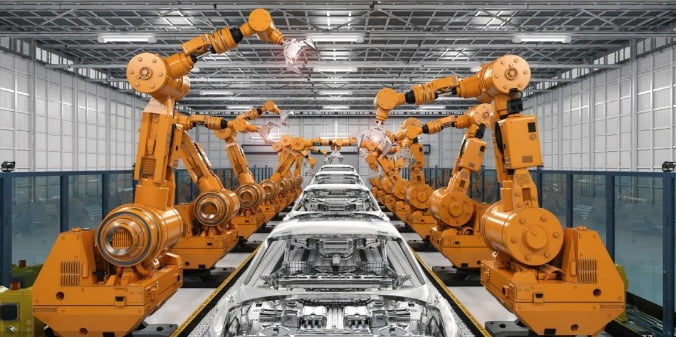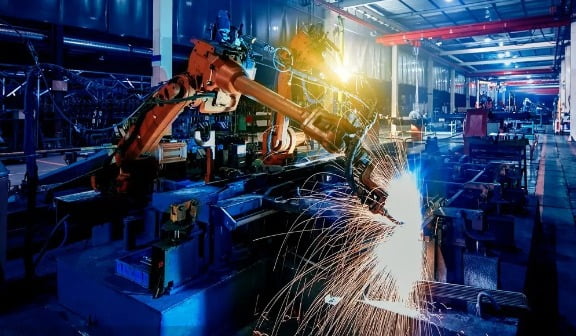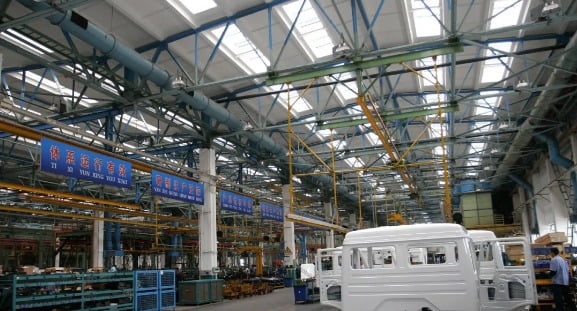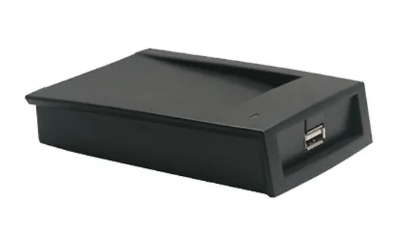La manufactura es la principal industria de la economía nacional de China, la fundación del país, y la fundación de un país fuerte. Desde la revolución industrial, se ha confirmado el ascenso y la caída de todos los países del mundo. Sin una industria manufacturera fuerte, no habría prosperidad de ningún país y nación.
Por lo tanto, building an internationally competitive manufacturing industry is the only way for my country to enhance its comprehensive national strength, ensure national security, and build a world power.
In order to achieve the strategic goal of a manufacturing powerhouse, the State Council officially released the “Made in China 2025” strategy on May 8, 2015. “Made in China 2025” put forward nine strategic tasks, including the important goal of promoting the deep integration of informatization and industrialization.
 At the 18th National Congress of the Communist Party of my country, it was proposed to use the in-depth integration of informatization and industrialization to lead and promote the development of the entire manufacturing industry. In the process of exploration, intelligent automobile manufacturing is also an indispensable part. The RFID technology of the Internet of Things has been very maturely applied in automobile manufacturing to realize intelligent and information-based automobile manufacturing management. RFID relies on anti-interference, sin contacto, high-precision, fast speed, good sealing, strong adaptability, anti-fouling, oil-proof, dust-proof, pressure resistance and other characteristics, and is suitable for the environment of dusty and high current interference in welding workshop , RFID technology is widely used in electroplating industry, automobile production workshop, medical sorting, hardware and other automated production lines, sorting line management and other fields.
At the 18th National Congress of the Communist Party of my country, it was proposed to use the in-depth integration of informatization and industrialization to lead and promote the development of the entire manufacturing industry. In the process of exploration, intelligent automobile manufacturing is also an indispensable part. The RFID technology of the Internet of Things has been very maturely applied in automobile manufacturing to realize intelligent and information-based automobile manufacturing management. RFID relies on anti-interference, sin contacto, high-precision, fast speed, good sealing, strong adaptability, anti-fouling, oil-proof, dust-proof, pressure resistance and other characteristics, and is suitable for the environment of dusty and high current interference in welding workshop , RFID technology is widely used in electroplating industry, automobile production workshop, medical sorting, hardware and other automated production lines, sorting line management and other fields.
Application of RFID technology in automobile production line
The automobile manufacturing industry was originally a typical multi-work, multi-process, and multi-material mass production process. Now with the development of personalized cars (buyers can customize the car), almost every car will have some personalized Therefore, it is necessary to apply RFID technology to achieve transparency in the entire production process. The automobile industry chain can be simply divided into three basic links: parts manufacturing, vehicle assembly and after-sales service. En la actualidad, RFID technology is mainly used in parts manufacturing and vehicle assembly links. Whether it is a parts production plant or a complete vehicle assembly plant, only manual management of a large number of parts and complex and numerous manufacturing processes is not only error-prone, but also unable to quickly improve the operational efficiency of each process from the source.
01 Application of RFID in automobile welding production line
In the early car body welding production lines, most of the manual methods were used, and the operation was carried out step by step according to the written operation manual, which was prone to human error. Más tarde, bar code labels were gradually used for management. Although the human error rate was reduced, identification errors often occurred due to the influence of dust, high temperature vibration, and oil pollution on the production site. When it comes to the situation with a cover, no matter whether it is a barcode label or manually, it can not be used with confidence.
Por lo tanto, choose high-temperature, dust-proof, metal-proof, anti-magnetic field, and reusable RFID tags to monitor welding production line operations through automatic identification operations. Instead of labor and barcode technology, due to the strong anti-pollution ability and durability of RFID tags, identification errors are greatly reduced and the visibility of the internal supply chain can be effectively improved.
 In workshops where multiple vehicle models are mixed-line production, RFID readers are installed in each welding station to confirm vehicle models. It is generally suitable for stations that need to continuously confirm vehicle models. Install anti-fouling, oil-proof, high-temperature resistant RFID tags (entry vehicle type information, welding instructions, procedures, etc.) In the process, the rail cars are equipped with their own “documento de identidad”. When the rail car passes the station, the RFID read-write head installed on the rolling bed reads the RFID tag fixed on the rail car to obtain data information such as the vehicle type. .
In workshops where multiple vehicle models are mixed-line production, RFID readers are installed in each welding station to confirm vehicle models. It is generally suitable for stations that need to continuously confirm vehicle models. Install anti-fouling, oil-proof, high-temperature resistant RFID tags (entry vehicle type information, welding instructions, procedures, etc.) In the process, the rail cars are equipped with their own “documento de identidad”. When the rail car passes the station, the RFID read-write head installed on the rolling bed reads the RFID tag fixed on the rail car to obtain data information such as the vehicle type. .
Basic process: when the rail car and other work piece carrying equipment move the equipment to the next station, the previous station model will pass the model data to the next station through the PLC, or the model will be directly detected by the next work piece detection equipment, and the hanging rail After the car is in place, read the vehicle type data recorded in the crane rail vehicle code body through RFID, and compare and confirm with the vehicle type data transmitted by PLC or the data detected by the vehicle sensor at the previous station to ensure the correct vehicle type and prevent tooling fixture switching errors Or the robot program number is called incorrectly, leading to serious equipment collision accidents, etc.. The same situation can be applied to the engine assembly line, the final assembly plate chain conveyor line and other stations that need to continuously confirm the vehicle type.
02 Application of RFID in automobile coating production line
The automobile coating production line has many complicated processes, large model changes, and great production flexibility. The purpose of automobile coating is to make every car sold to consumers look more perfect. Por lo tanto, each process link of the workshop production line must have a very high level of automation and quality monitoring system. Por lo tanto, the use of RFID technology in the body identification system of the production line automatic control system can collect all kinds of on-site data statistics, status monitoring and quality inspection information in the production process in real time, and send it to the production control center in time.
 Basic process: In the car painting production line, the conveying equipment is a skid conveyor. RFID tags are installed on each skid carrying the car body. In the entire production process, this tag runs with the work piece to form one The data that moves with the car body becomes a “Carrocería inteligente” that carries data with you. According to the different needs of the production process and management, RFID readers can be installed at the entrance and exit of the paint shop, the branch of the work piece logistics, and the entrance of the important process (such as the painting room, sala de secado, área de almacenamiento, etc.). Each on-site RFID reader can complete the collection of skid, car body information, spray color and frequency, y enviar la información al centro de control al mismo tiempo.
Basic process: In the car painting production line, the conveying equipment is a skid conveyor. RFID tags are installed on each skid carrying the car body. In the entire production process, this tag runs with the work piece to form one The data that moves with the car body becomes a “Carrocería inteligente” that carries data with you. According to the different needs of the production process and management, RFID readers can be installed at the entrance and exit of the paint shop, the branch of the work piece logistics, and the entrance of the important process (such as the painting room, sala de secado, área de almacenamiento, etc.). Each on-site RFID reader can complete the collection of skid, car body information, spray color and frequency, y enviar la información al centro de control al mismo tiempo.
03 Application of RFID in automobile assembly production line
As the final link in the production of a complete automobile, the assembly shop involves numerous parts and processes, and plays an important role in ensuring the quality of the automobile and the production schedule. Any interruption of the assembly process means a delay in the operation. On the final assembly line, especially on the assembly line that uses JIT (Just in Time) production methods, raw materials and parts must be delivered to the workstation on time, and inventory and material supply must also match the vehicle assembly schedule.
 Basic process: Install RFID tags on the hanger of the assembled vehicle (enter information such as vehicle, ubicación, número de serie, etc.), and then program the corresponding serial number for each assembled vehicle. The label with detailed requirements for the vehicle runs along with the assembly conveyor belt, Install RFID readers at each station position to ensure that the car completes the assembly task without error at each assembly line position. When the rack carrying the assembled vehicle passes the RFID reader, the reader can automatically obtain the information in the tag and send it to the central control system. The system can collect production data and quality monitoring data on the production line in real time, and then transmit it To material management, programación de producción, quality assurance and other related departments. De esta manera, funciones como el suministro de materias primas, programación de producción, monitoreo de calidad, and vehicle quality tracking can be realized at the same time, and various malpractices of manual operation can be effectively avoided.
Basic process: Install RFID tags on the hanger of the assembled vehicle (enter information such as vehicle, ubicación, número de serie, etc.), and then program the corresponding serial number for each assembled vehicle. The label with detailed requirements for the vehicle runs along with the assembly conveyor belt, Install RFID readers at each station position to ensure that the car completes the assembly task without error at each assembly line position. When the rack carrying the assembled vehicle passes the RFID reader, the reader can automatically obtain the information in the tag and send it to the central control system. The system can collect production data and quality monitoring data on the production line in real time, and then transmit it To material management, programación de producción, quality assurance and other related departments. De esta manera, funciones como el suministro de materias primas, programación de producción, monitoreo de calidad, and vehicle quality tracking can be realized at the same time, and various malpractices of manual operation can be effectively avoided.
04 Related RFID hardware equipment
1.Etiquetas RFID
This anti-metal tag adopts 134.2K working frequency, PPS high temperature resistant material, can work in the environment of -25℃~+260℃, and conforms to the standard ISO11784/11785 (FDX-B).
Support EM4305 card read and write operations, commonly used for AGV landmarks, site tags, animal tag encoding, support FDX-B and EMID formats. The EM4305 radio frequency communication protocol is integrated in the reader. Developers can complete the reading and writing operations of the card by sending simple commands through the communication interface; detailed development documents and complete development routines can greatly reduce the difficulty of your product development, Shorten the product development cycle.






